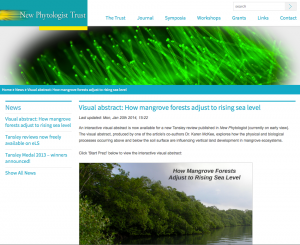When I was a beginning graduate student, I had only a vague understanding of just how important communication skills would be to me as a scientist. Like many students starting out, I thought science was mostly about doing the research, conducting experiments, and carrying out laboratory analyses. It really did not occur to me at that time that unless I effectively communicated my findings to others, all that work would be for nothing.
In addition, I had no inkling of how communication of information would change over my career. When I embarked on research for a master’s degree in 1973, there were no cell phones, no iPads, no personal computers, and no Internet. Just think about that for a moment. The communication technologies that dominate our lives today did not exist when I was a student.
Of course, communication skills are all important for a successful career in science; but how we communicate information has undergone a radical change in the past couple of decades, and even in the past few years. Those of us in science—whether research, teaching, or outreach—struggle to keep up with those changes. A growing number of scientists are developing strong communication strategies that take advantage of the new communication technologies—to raise their visibility within their fields (and beyond), to promote new publications, to develop new collaborations, and to crowdsource fund their research—to name a few ways.
I recently gave a seminar in which I talked about the new ways that scientists can communicate their work through digital media, online publishing, and social networking. I’ve decided to make that slideshow publicly available on the Prezi website. You can see it below in the embedded player window (select full screen for best viewing):


